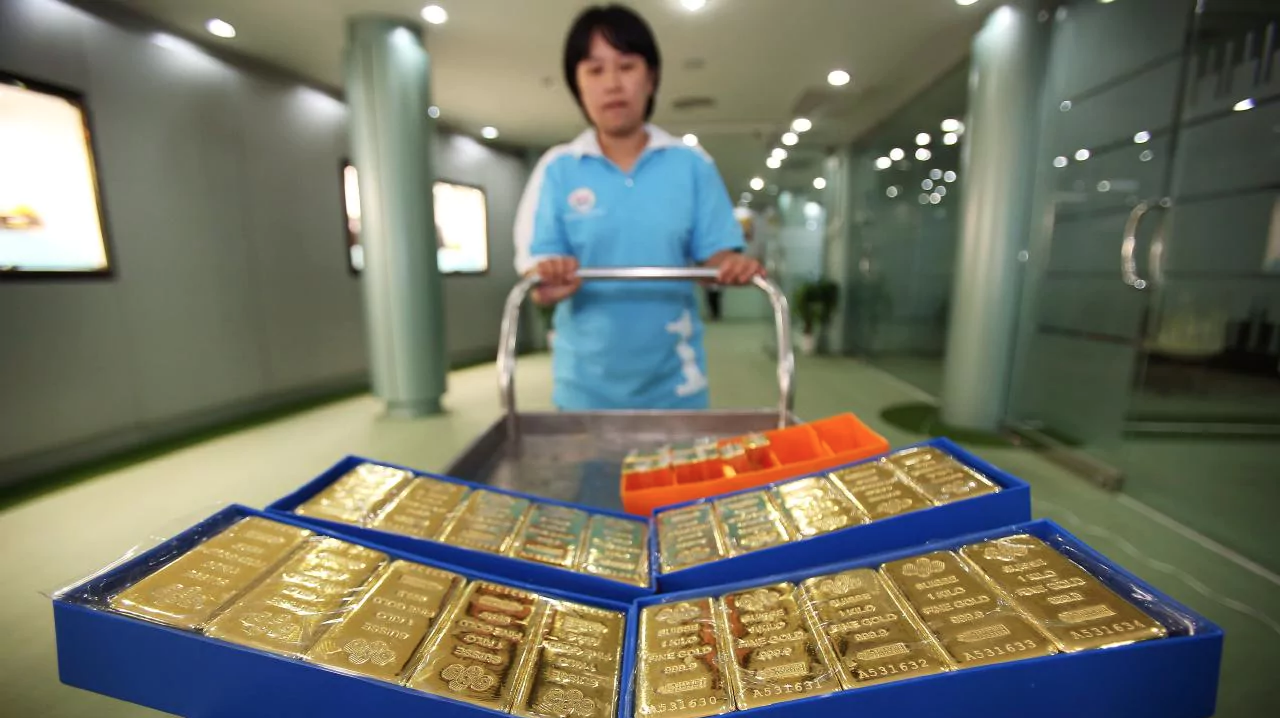Gold bugs bet big on a price rebound

Big investors are betting on the precious yellow metal this year. Picture: Jason Edwards.
As far as concentrated financial bets go, the massive investment play by Naguib Sawiris in gold this year is a standout.
But such is the conviction of the Egyptian billionaire that gold is set for a major price rebound, that he has invested about half of his estimated $US5.7 billion ($7.56bn) fortune into the precious yellow metal.
He’s done that primarily via Canadian goldmining entity La Mancha Resources, through which he has also acquired strategic stakes in Australian-listed gold producer Evolution Mining and Africa’s Endeavour Mining. And, after recently selling down part of his holding in Evolution, and realising a large profit, Sawiris is now actively focused on taking new gold positions across Latin America and Central Asia.
Why is he going “half in” on gold? In a nutshell, Sawiris is counting on the gold price to surge close to 40 per cent over the medium term, from its current levels of about $US1300 an ounce to $US1800.
And that belief is founded on his view that gold demand will rise strongly, once global stockmarkets lose momentum and as the precious metal regains its haven status as global geopolitical tensions boil over.
Demand will come from central banks wanting to store gold as a currency hedge, from consumers and investors wanting to buy it, and from technology companies needing to use small amounts of gold within computers, mobile phones and other devices.
Sawiris is already in good company. Fellow billionaire John Paulson, the US hedge fund titan, has been a gold bull for years. According to filings with Nasdaq, his company Paulson & Co still holds $US539 million in SPDR Gold Trust, the State Street ETF. Paulson also had $US117m in AngloGold Ashanti, $US108m in NovaGold, and a position Randgold Resources.
Gold is widely known as the ultimate hedge against volatility, and we’ve had plenty of that so far this year. Just the same, gold has followed a rocky path this year too, leading some analysts to question whether the metal has lost some of its investment appeal.

In US dollar terms, it has risen only slightly from its $US1291 an ounce close on January 1 to about $US1310 now — a rise of just 1.47 per cent. Luckily for Australian investors, the falling exchange rate with the US dollar has been a blessing. In Australian dollars, the gold price has risen just short of $90 an ounce, or 5.26 per cent, from $1654 to $1741.
A detailed report just released by Thomson Reuters research group GFSM has predicted gold could average $US1360 per ounce this year, while Goldman Sachs has a six-month target of $US1375.
So, why has the gold price been lacklustre year-to-date? While geopolitical fear factors still abound, gold demand has been quite mixed. Data released from the World Gold Council shows that global gold demand fell by 7 per cent in the first quarter of 2018 to 973.5 tonnes, the lowest level since 2008.
The main cause was a fall in investment demand for gold bars and gold-backed ETFs, in part due to range-bound gold prices but also a reflection of the strong inflows into gold ETFs in the first quarter of 2017. But the lack of support in the first quarter was turned around in April, with global gold-backed ETF holdings adding 72.2 tonnes to 2481 tonnes. This was the strongest month of net inflows in more than a year, led by significant North American and European inflows and supported by a small increase in Asia.
Gold jewellery demand has been steady this year, as growth in China and the US has compensated for weaker Indian demand. But central bank demand has been strong. Over the first quarter it was the highest in four years at 116.5 tonnes, in line with long-term average quarterly purchases of 114.9 tonnes since 2010.
Russia remains the most prolific buyer of gold. It added 41.7 tonnes in the first quarter, taking its total gold reserves to 1890.8 tonnes (18 per cent of total gold reserves). The Central Bank of Russia has bought gold for 38 consecutive months, with a Putin government directive to buy gold showing no signs of abating and reinforcing the view of gold as a strategic asset. Turkey was again the second-largest net buyer with its holdings having doubled over the past year to 231.9 tonnes.
The total supply of gold increased by 3 per cent in the period to 1063.5 tonnes.
So where does this all leave retail investors wanting to take a punt on gold, via gold stocks or physical bullion, and billionaires such as Sawiris and Paulson who are already heavily invested?
That all depends on how you view the world as an investor and on a geopolitical risk level. The Trump administration’s decision to back out of the Iranian nuclear deal and the escalating warfare in Syria can only help the gold price.
Earlier this year, the Trump administration lodged an official request with the Guggenheim Museum in New York to borrow the van Gogh painting Landscape With Snow to hang in the White House. But instead, the museum offered up its prize 2017 exhibit, a solid-gold, fully functioning toilet, pertinently named America, which had been used by more than 100,000 visitors while on display.
Perhaps the Guggenheim has some inside knowledge on where the gold price is heading?
Frequently Asked Questions about this Article…
Big investors like Naguib Sawiris are betting on gold due to expectations of a major price rebound. Sawiris believes the gold price will surge by about 40% as global stock markets lose momentum and geopolitical tensions increase, making gold a safe haven.
The gold price has been relatively lackluster this year, rising only slightly from $US1291 an ounce at the start of the year to about $US1310, a 1.47% increase. However, Australian investors have benefited from a weaker exchange rate, seeing a 5.26% rise in Australian dollar terms.
Gold demand is influenced by several factors, including geopolitical tensions, central bank purchases, and consumer demand. While investment demand for gold bars and ETFs fell earlier this year, central bank demand has been strong, with Russia and Turkey being significant buyers.
Naguib Sawiris has invested about half of his fortune into gold, primarily through Canadian goldmining entity La Mancha Resources. He has strategic stakes in companies like Evolution Mining and Endeavour Mining and is looking to expand his gold positions in Latin America and Central Asia.
Geopolitical risks, such as the Trump administration's actions in the Middle East, can increase gold's appeal as a safe haven asset. These tensions often lead to higher demand for gold as investors seek stability amid uncertainty.
Thomson Reuters research group GFSM predicts that gold could average $US1360 per ounce this year, while Goldman Sachs has set a six-month target of $US1375, indicating a potential rise in gold prices.
Central bank demand for gold has been strong, with the first quarter of the year seeing the highest purchases in four years. Russia remains the most prolific buyer, adding significantly to its reserves, followed by Turkey.
Retail investors should consider their view on global geopolitical risks and market volatility when investing in gold. The actions of large investors like Sawiris and Paulson, who are heavily invested in gold, can also provide insights into potential market trends.
















